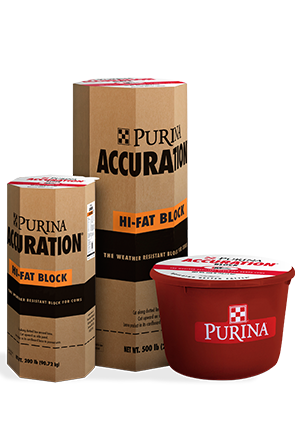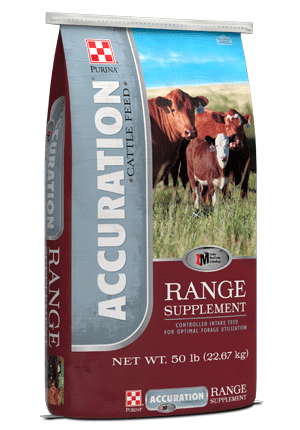
What to Do with Your Cattle Forage Analysis Results
Nutrition : Forage
You submitted your cattle forage sample and the results are in. Now it’s time to interpret the results and put together a plan to fill nutritional gaps.
While it can seem like a daunting task, understanding a few key values can make results analysis easier.
Here are a few values to pay attention to when you get your cattle forage analysis back:
Dry matter can tell you quite a bit about how forages were harvested and how they may transform during storage. You’ll also know your risk for mold and yeast growth.
Stored cattle forage that has undergone significant heating is an exception. In this instance, the analysis should account for bound protein or unavailable protein, defined as ADF-CP, where ADF is acid detergent fiber. This value is used to report available crude protein (ACP), which can be used to balance cattle feed rations for protein.
ADF and neutral detergent fiber (NDF) are laboratory procedures used to predict forage digestibility and intake potential. Forage intake potential decreases as forages mature and NDF fractions increase. Likewise, cattle forage digestibility decreases as ADF fractions increase.
ADF content is the best laboratory measurement of forage energy value. ADF is used in prediction formulas to calculate energy value expressed as net energy gain (NEg) and net energy maintenance (NEm). These values can be used to balance cattle feed rations for energy requirements.
Relative feed value (RFV) is often reported and considers forage dry matter digestibility and dry matter intake. RFV is not used to balance diets but can be useful in comparing multiple lots of hay or to get a basic idea of forage quality.
While macro mineral analysis can be helpful, micro mineral analysis is more expensive. It’s also difficult to get a representative sample of micro minerals because forage content varies by field and season.
Well-interpreted results can be used to fine-tune cattle diets, meet cattle requirements and optimize performance. But don’t interpret alone.
Bring your feed supplier, nutritionist and agronomist to the table. A whole-farm approach can help determine the best way to use your cattle forage today and help you raise better forages in the future.
Make sure your herd is covered year-round. Learn more about cattle mineral and cattle supplements.
Does your nutrition program stack up? Find out with a Proof Pays feeding trial.
While it can seem like a daunting task, understanding a few key values can make results analysis easier.
Here are a few values to pay attention to when you get your cattle forage analysis back:
Dry matter (DM)
Dry matter is the simplest measurement to understand, and it is critical to know. Analysis results should always be viewed on a DM basis to remove moisture variation, especially when comparing values between forage for cattle.Dry matter can tell you quite a bit about how forages were harvested and how they may transform during storage. You’ll also know your risk for mold and yeast growth.
Crude protein (CP)
Crude protein is a calculation of nitrogen content multiplied by 6.25. In most cases, CP can be used to balance protein in cattle feed rations.Stored cattle forage that has undergone significant heating is an exception. In this instance, the analysis should account for bound protein or unavailable protein, defined as ADF-CP, where ADF is acid detergent fiber. This value is used to report available crude protein (ACP), which can be used to balance cattle feed rations for protein.
Energy content
Values used to interpret energy content are often the most confusing. The only real determination of a feed’s energy value is through feeding trials. Therefore, a forage’s energy is estimated based on measurable values in a feedstuff.ADF and neutral detergent fiber (NDF) are laboratory procedures used to predict forage digestibility and intake potential. Forage intake potential decreases as forages mature and NDF fractions increase. Likewise, cattle forage digestibility decreases as ADF fractions increase.
ADF content is the best laboratory measurement of forage energy value. ADF is used in prediction formulas to calculate energy value expressed as net energy gain (NEg) and net energy maintenance (NEm). These values can be used to balance cattle feed rations for energy requirements.
Relative feed value (RFV) is often reported and considers forage dry matter digestibility and dry matter intake. RFV is not used to balance diets but can be useful in comparing multiple lots of hay or to get a basic idea of forage quality.
Macro minerals
Consider macro mineral content (Ca, P, K and Mg). Concentrations can vary, but knowing forage macro mineral content can help estimate supplementation requirements; for example, if you’ve experienced winter tetany in the past and want to estimate magnesium supplementation needs.While macro mineral analysis can be helpful, micro mineral analysis is more expensive. It’s also difficult to get a representative sample of micro minerals because forage content varies by field and season.
Well-interpreted results can be used to fine-tune cattle diets, meet cattle requirements and optimize performance. But don’t interpret alone.
Bring your feed supplier, nutritionist and agronomist to the table. A whole-farm approach can help determine the best way to use your cattle forage today and help you raise better forages in the future.
Make sure your herd is covered year-round. Learn more about cattle mineral and cattle supplements.
Does your nutrition program stack up? Find out with a Proof Pays feeding trial.





